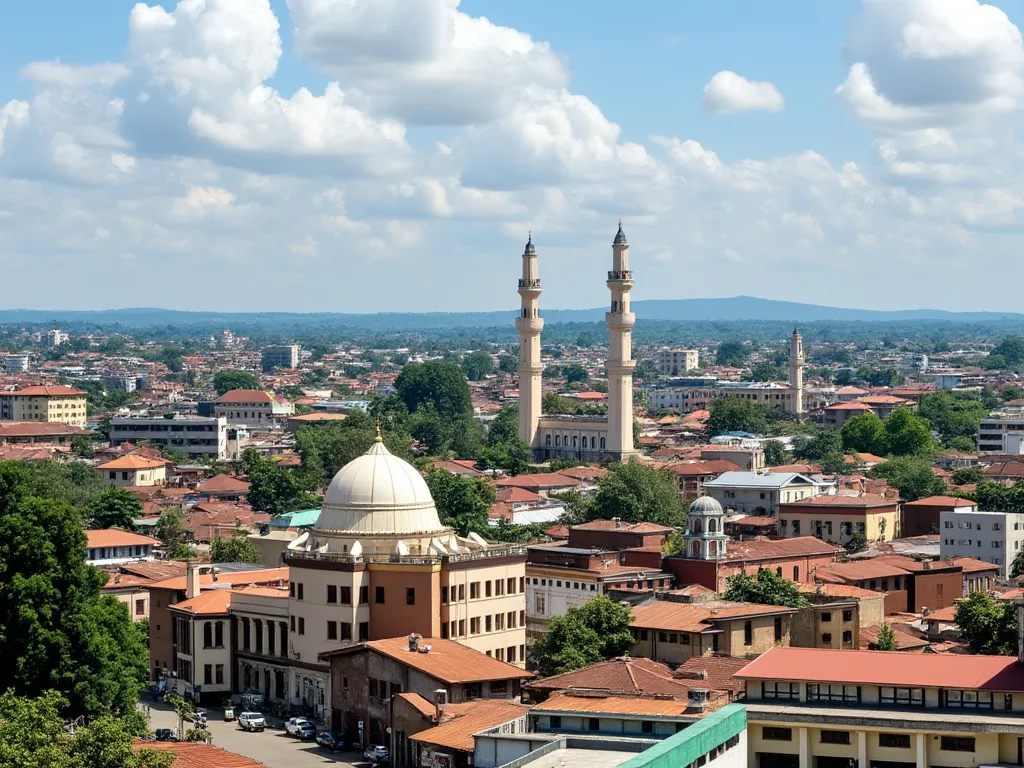
Katmandú, la capital de Nepal, es una metrópolis bulliciosa situada en el valle de Katmandú, con forma de cuenco. La ciudad es conocida por su rica herencia cultural, su impresionante arquitectura y su asombrosa belleza natural. Katmandú es una ciudad de contrastes, donde antiguos templos y santuarios se encuentran junto a edificios e infraestructuras modernas.
Información sobre Katmandú
| País | 🇳🇵 Nepal |
| Población | 845,767 |
| Coordenadas de la ciudad | 27.7172° N, 85.3240° E |
| Área de la ciudad | 49.45 km² |
| Clima | Clima subtropical de tierras altas |
| Idioma | Nepalí |
| Moneda | Rupia nepalí |
| Zona horaria | UTC+5:45 |
| Proximidad a otras ciudades importantes | Lucknow, India (410 km), Patna, India (440 km), Kolkata, India (640 km) |
Antecedentes históricos de Katmandú
Katmandú tiene una larga y rica historia que se remonta al siglo II d.C. La ciudad fue una parada importante en la antigua Ruta de la Seda, una red de rutas comerciales que conectaban India con China. A lo largo de los siglos, Katmandú ha sido gobernada por varias dinastías, incluyendo los reinos Licchavi, Thakuri y Malla. En 1768, la ciudad fue unificada bajo el dominio de la dinastía Shah, que aún reina hoy en día.
Ubicación geográfica de Katmandú
Katmandú está situada en el corazón del valle de Katmandú, una región fértil y densamente poblada rodeada por las montañas del Himalaya. La ciudad se encuentra a una altitud de 1,400 metros (4,600 pies) sobre el nivel del mar, lo que la convierte en una de las capitales más altas del mundo. El clima en Katmandú es templado, con cuatro estaciones distintas: invierno, primavera, verano y otoño.
Significado cultural de Katmandú
Katmandú es una ciudad impregnada de cultura y tradición. La ciudad alberga numerosos templos, santuarios y monumentos, incluyendo el famoso Templo de Pashupatinath, un sitio del Patrimonio Mundial de la UNESCO. La escena cultural de la ciudad también se refleja en sus vibrantes festivales y celebraciones, como los festivales de Dashain y Tihar.
Importancia económica de Katmandú
Katmandú es el centro económico de Nepal, representando una parte significativa del PIB del país. La ciudad es un importante centro de comercio, comercio e industria, con un próspero sector manufacturero. El turismo también es un contribuyente significativo a la economía de la ciudad, con millones de visitantes que acuden a la ciudad cada año para experimentar su rica cultura y belleza natural.
Datos interesantes sobre Katmandú
- Katmandú alberga el templo hindú más antiguo conocido en el mundo, el Templo de Changu Narayan.
- El nombre de la ciudad se deriva de la palabra sánscrita "Kasthamandap," que significa "templo de madera."
- Katmandú es a menudo referida como la "Ciudad de los Templos" debido a sus numerosos templos y santuarios.
- La ciudad alberga la estatua de Buda más grande del mundo, la Estupa de Boudhanath.
Atracciones turísticas en Katmandú
- Templo de Pashupatinath
- Estupa de Boudhanath
- Templo de Changu Narayan
- Plaza Durbar de Katmandú
- Museo Nacional de Nepal
Conclusión sobre Katmandú
Katmandú es una ciudad que combina a la perfección la tradición y la modernidad, ofreciendo una experiencia única e inolvidable para los visitantes. Desde su impresionante arquitectura hasta su vibrante escena cultural, Katmandú es una ciudad que te dejará asombrado. Ya sea que estés interesado en la historia, la cultura o la aventura, Katmandú tiene algo que ofrecer para todos.
 Jartum
Jartum
 Kigali
Kigali
 Kabul
Kabul
 Kampala
Kampala